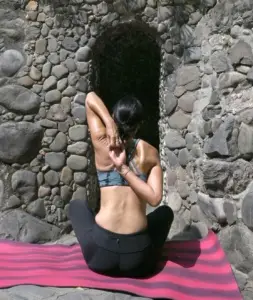
Mindfulness is a beneficial practice for individuals managing diabetes as it combines physical postures, breathing exercises, and meditation to improve overall health and well-being. Regular practice can help regulate blood sugar levels, reduce stress, and promote better circulation, making it a valuable addition to diabetes management alongside medical treatment and dietary adjustments.
Benefits of Diabetes Management Therapy:
Considerations before Starting:
Mindful Poses for Diabetes Management:
Breathing Exercises for Diabetes Management:
Mindful Practice for Diabetes Management:
Summary with Tips:
By integrating these mindful practices into your routine, you can effectively manage diabetes while improving overall health and well-being. These practices promote physical fitness, mental clarity, and emotional balance, contributing to a healthier lifestyle and enhanced quality of life.

GoInwards is an IRS 501(c)(3) Non-Governmental Organization (NGO), chartered to advance wellness through integrative health related awareness, prevention, intervention, and resilience-based educational programs.
FEIN 90-0609802